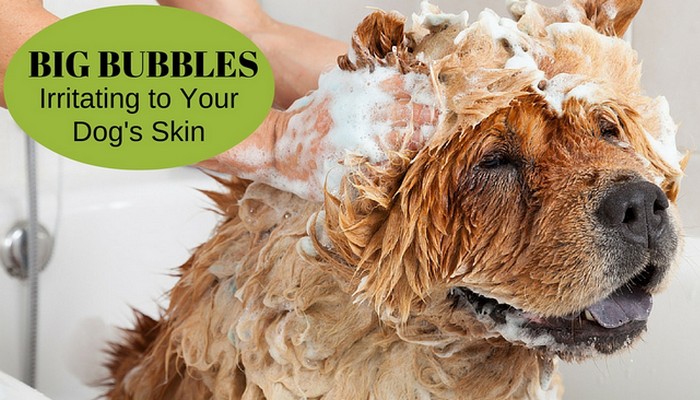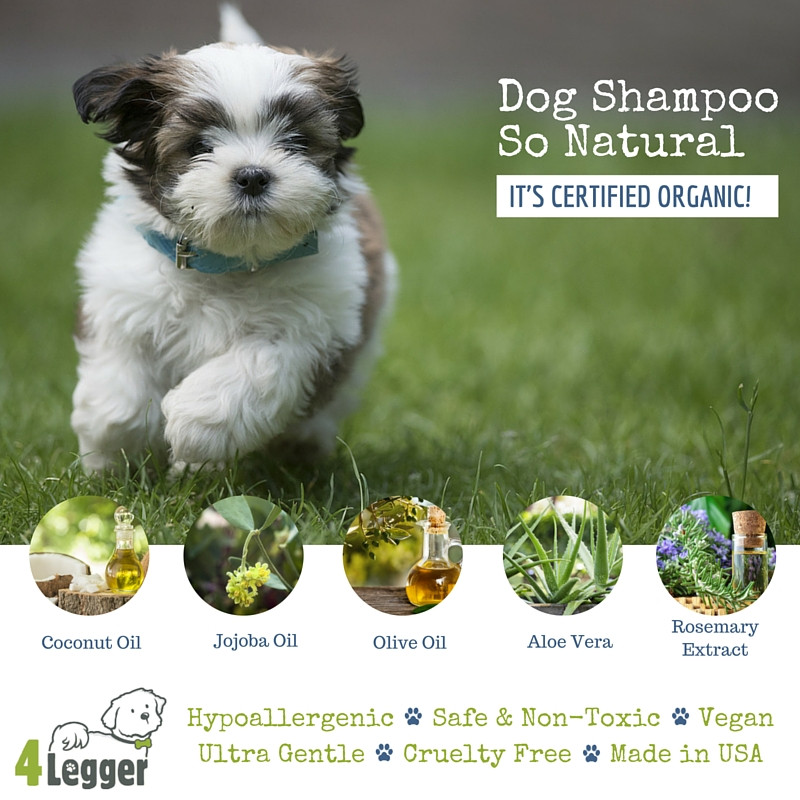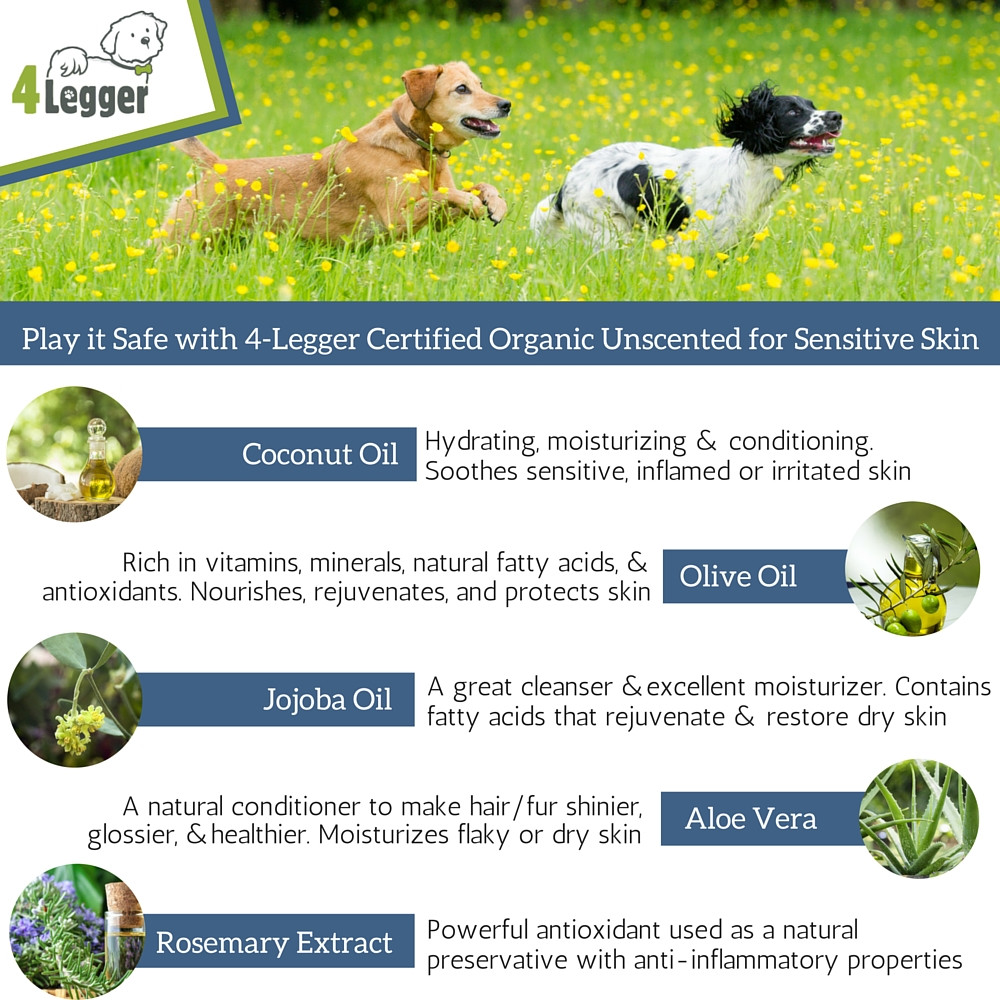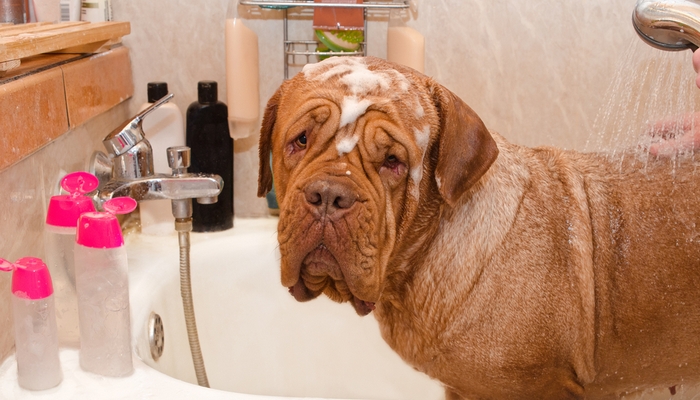Dog owners are concerned about the what goes into their pet's body. They want him to eat healthy food and snacks – some even go so far as to make their own dog food and treats. But what about the products that you're using on the outside of his body.
Knowing how to choose the best dog grooming products can save you money and heartache in the future. Some products are filled with chemicals that have been linked to skin allergies, hair loss and even cancer.
Artificial dyes and colorants are just the start. There are so many harmful ingredients used in pet grooming products now-a-days that it's just as easy to tell you what you should be looking for rather than what you shouldn't. We all have good intentions when it comes to grooming our dogs at home, but if you don't know how to choose dog grooming products, you could end up doing more harm than good.
Even some products that are labeled “natural” aren't nearly as safe as you'd think. It's important that you don't just read the bold print on the front of the bottle, but actually take the time to read the entire list of ingredients. If there is an ingredient that you don't know, take a few minutes to look it up. A bit of research now could save you hundreds of dollars in vet bills down the road.
This week I had the pleasure of discussing this topic with Melissa Boland, the Pack Leader at 4-Legger. The company creates certified organic dog grooming products, and Melissa says they also focus on educating pet owners on the dangers of the chemicals in most commercial grooming products.
How To Choose the Best Dog Grooming Products

So the first thing I needed to know was what exactly is harmful about the majority of the dog grooming products that we find on pet store shelves? Why is it so important that we, as dog owners, learn how to choose dog grooming products and pay more attention to the ingredients in the products that we buy?
Melissa explained to me that there are two ways that traditional grooming products are more harmful. The root problem stems from the fact that there are no regulations in the pet grooming industry for ingredient purity and standards for marketing. The first, ingredient purity, is where it is easy to get confused.
RELATED: 3 Common Canine Diseases Linked to Dog Food
A manufacturer may start with an ingredient that was derived from a coconut; but, that ingredient was the product of many chemical reactions. The ingredients used to initiate the chemical reaction may have links to cancer or other health issues. When they purchase that ingredient to manufacture their dog shampoo, they don’t test it to make sure it is 1,4dioxane free. There is no regulation that requires the testing and it is expensive.

The 1,4dioxane is considered a “contaminant” and does not have to be listed as an ingredient.
All the pet parent sees is something like “naturally derived coconut” on the label. There have been no studies that tested dog shampoo for 1,4dioxane, so as pet parents we have no idea how many on the market are contaminated. We do know that in 2008, when the Organic Consumers Association tested 100 common brands of human grade products to look for 1,4dioxane, it was found in a shocking 46%!
Mind you, there are regulations on human grade products, but not on pet products. So, what do you think that means for the majority of dog grooming products that are available?
The second major reason that traditional dog shampoos are so harmful is simply because of the labeling. Melissa is so passionate about this aspect of the pet grooming industry, and she explained to me that you will often see products marked medicated, tear free, all natural, organic, clinical vet formula, vegan, cruelty free, hypoallergenic, etc…and they absolutely are not.
“To me, this is worse than the issue of ingredient purity. At least you can learn to recognize ingredients and avoid them. The bottom line is, as a pet parent, you need to learn some basics on identifying safe and nontoxic grooming products.” – Melissa Boland
Ingredients to stay away from
So, now we know there are certain ingredients that we need to be watching out for, but what are they? When learning how to choose dog grooming products, Melissa says there are some common chemicals and toxins that dog owners need to be sure are NEVER in the grooming products that they choose.
RECOMMENDED READ: The Best Dog Shampoo Review
She told me that one of the first things that they did when creating 4-Legger products was develop a list of ingredients that would never be in anything they made. Some of the most important ingredients to stay away from, and ones that you will not find in ANY 4-Legger grooming products include:
- The “sulfates” like sodium laureth sulfate – just look for words ending in “ate”
- Artificial colors - how can a dog shampoo be both natural and hot pink or bright blue in color?
- Artificial fragrance
- Cocamide DEA, MEA, or TEA
- Cocamidopropyl betaine
- EDTA
- The commonly used formaldehyde based preservatives: DMDM Hydantoin, Doazolidinyl urea, Imidazolidinyl Urea, and Quaternium15
- Preservatives Methylchloroisothiazolinone and Methylisothiazolinone
- Methylparaben & Parabens
- Phthalates
- Propylene glycol
- Polyethylene glycol
I can almost guarantee that if you go look at the pet grooming products that you use, you'll find many of these ingredients. Don't worry, you're not alone. I was using them too! This is article isn't being written for the dog owners that already understand this information. It's to teach you how to choose dog grooming products, so don't beat yourself up.
It's never too late to make a positive change for your dog's health and overall well-being.
What you should be looking for
When I asked this question, Melissa told me it was actually a difficult one to answer. She said the simplest way to explain it is to look at the ingredients in 4-Legger’s dog shampoo: saponified organic oils with organic aloe vera, essential oils, and rosemary extract.
Dog shampoo made with saponified oils are gentle compared to those that are detergent based. Essential oils are used for the aroma and it’s natural properties such as its ability to moisturize skin.
If you're looking for a more complex answer, essentially every pet parent will have to develop their own process of elimination to determine what they are comfortable using on their furry family member. You will also have to read past the marketing materials to focus on the ingredients and the product appearance.
While Melissa agrees that this a personal choice for every pet parent, she wants to point out that approximately 50% of our dogs will die from cancer. Only 5% of these cancers are genetic. The remaining 95% are lifestyle and environmentally based. Pet parents can make their own decision on where they want to reduce their dog’s exposure to environmental toxins, but grooming product manufacturers haven’t made it easy.
You can’t look at a single ingredient that is linked to skin irritation in sensitive pets and think “My dog doesn’t have sensitive skin, so I can use that.”
The ingredient that causes skin irritation may be contaminated with the toxic ingredients used to derive it, and that ingredient won’t be listed on the label. The easy route is to avoid all products with Cocamide DEA, MEA, or TEA, Cocamidopropyl betaine and the sulfates. If the product says it is sulfate free, look at a picture to see if the product has a lot of bubbles. Where there are bubbles, there are probably sulfates.
The next step in learning how to choose dog grooming products, look for obvious synthetic or petroleum based ingredients like color or fragrance. If you don’t see color or fragrance listed on the ingredients, look at the product. Is it a “natural” color? Do reviewers mention a fragrance?
Finally, when learning how to choose dog grooming products you need to look at what preservatives are being used. Many dog grooming product manufacturers will tell you that the percent of a formaldehyde based preservative is so low in the product that safety is a non-issue.
If you look at all of the combined ingredients in the bottle, a low percentage here, a low percentage there, they start to add up to the majority of the product being developed with ingredients with known links to health issues.
What is a certified organic shampoo?
In order to be used in an organically certified product, every ingredient must either be certified to NOP (National Organic Program) standards which are governed by the USDA, or must have been grown and harvested in a manner compliant with NOP regulation.
Melissa told me that it is very important to 4-Legger that pet parents know that their ingredients have been reviewed throughout their lifecycle - starting from where and how they are grown, to how they were harvested, processed, transported, manufactured, packaged and shipped. This is something that is very important to keep in mind when learning how to choose dog grooming products.
RELATED ARTICLE: Review – Eco Dog Care Pet Shampoo and Freshening Spray
When a product is certified organic, that means there is a literal paper trail to prove its certification requirements.
This level of scrutiny prevents manufacturers from making organic claims that are false. However, it is largely up to pet parents to report violations to the NOP for enforcement. This is why it is so important for pet parents to have a proper understanding of what “organic” means and how they can identify products that truly are organic from ones that are not.

According to Melissa, pet parents pay, on average, 21% more for products with the words “all natural” on the label. If you are going to pay more, don’t you want a product that really is all natural? Only products that are certified organic to the USDA NOP standards ARE all natural!
If you're interested in 4-Legger products
Because their products are so different from other dog grooming products on the market, you will notice a few major differences if you decide to try 4-Legger grooming products. The biggest difference is, by far, the consistency. Melissa says that because they don't add the synthetic thickeners that are in traditional dog shampoo they often hear “It is thin”.
However, they are very upfront about the consistency and caution people to not turn the bottle over and pour it out over their dog. Use a little it will go a long way! This is great if you're on a budget as well – the less you use, the longer your bottle will last.
The second difference is the use of natural essential oils instead of artificial fragrance. The lavender will smell like real lavender, not synthetic lavender. Melissa says she has to laugh when someone says, “This doesn’t smell like this other lavender product I’ve used.” Odds are, if you look up that lavender product, you'll discover that it is all synthetic. No wonder!
I’d like to take this time to thank Melissa Boland for speaking with me about how to choose dog grooming products and the importance of understanding the ingredients in the products you choose.. Make sure you check out 4-Legger for more information about the chemicals and toxins that are found in most dog grooming products and how it will benefit your dog's health if you switch to better quality products.















